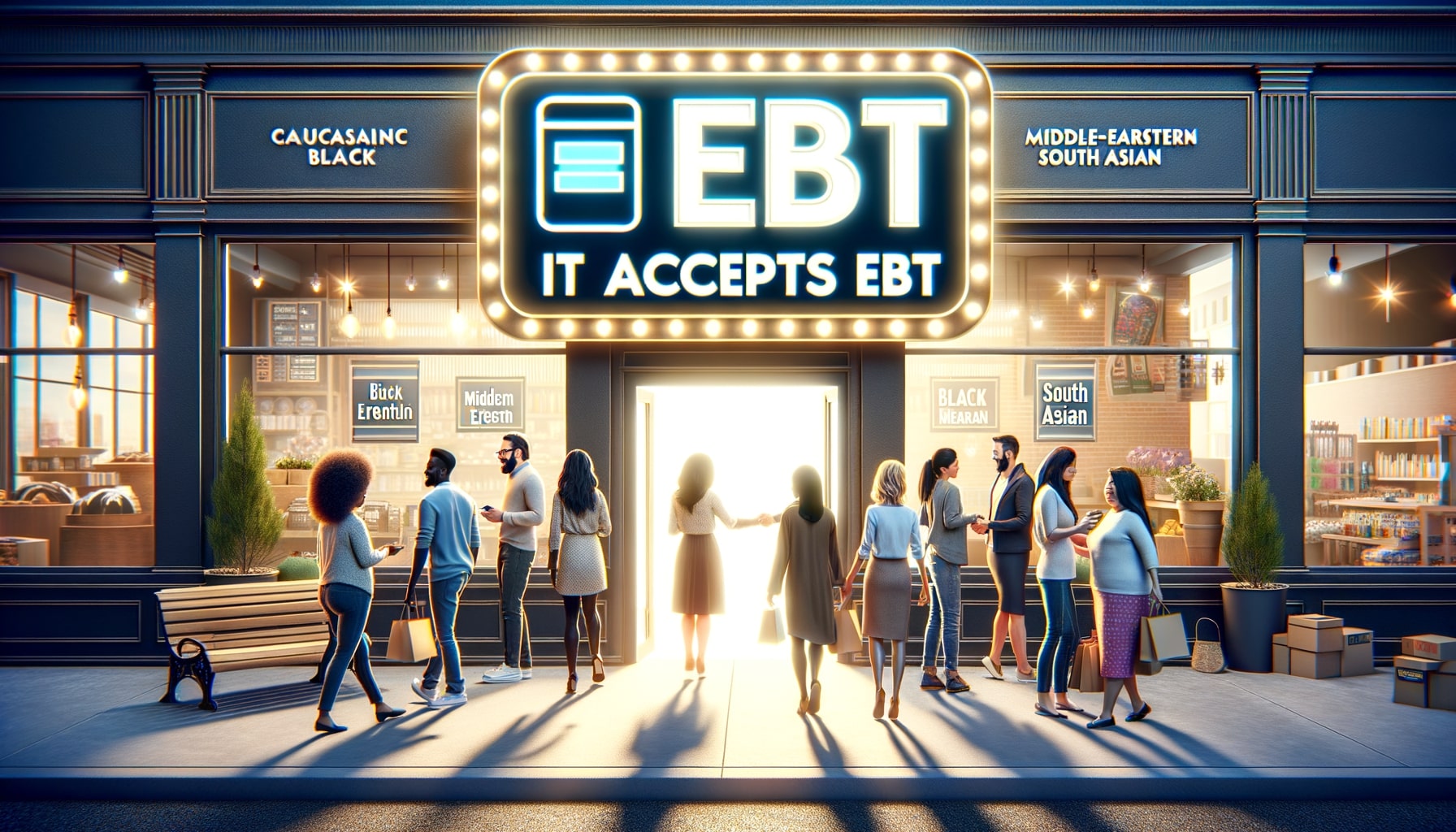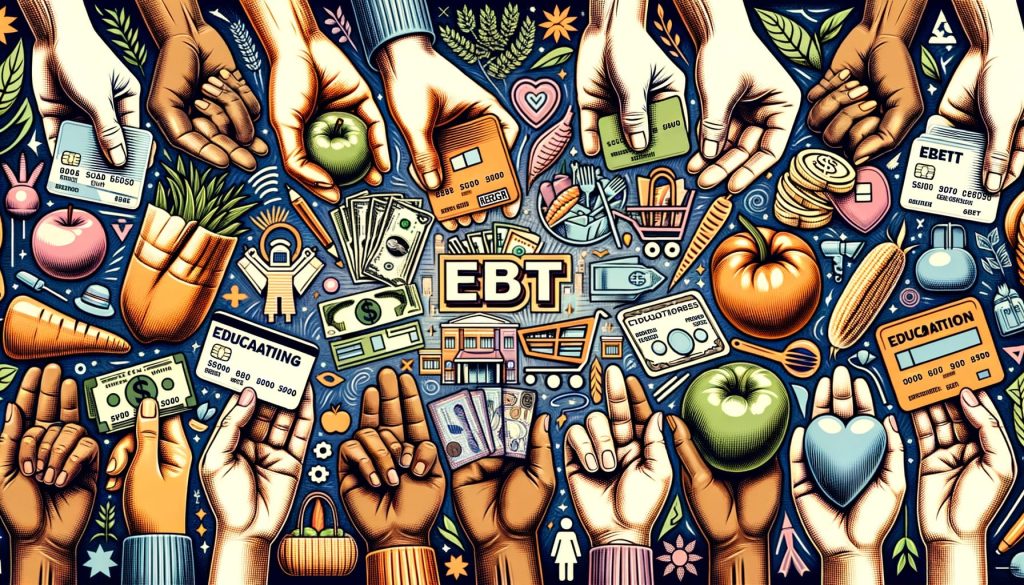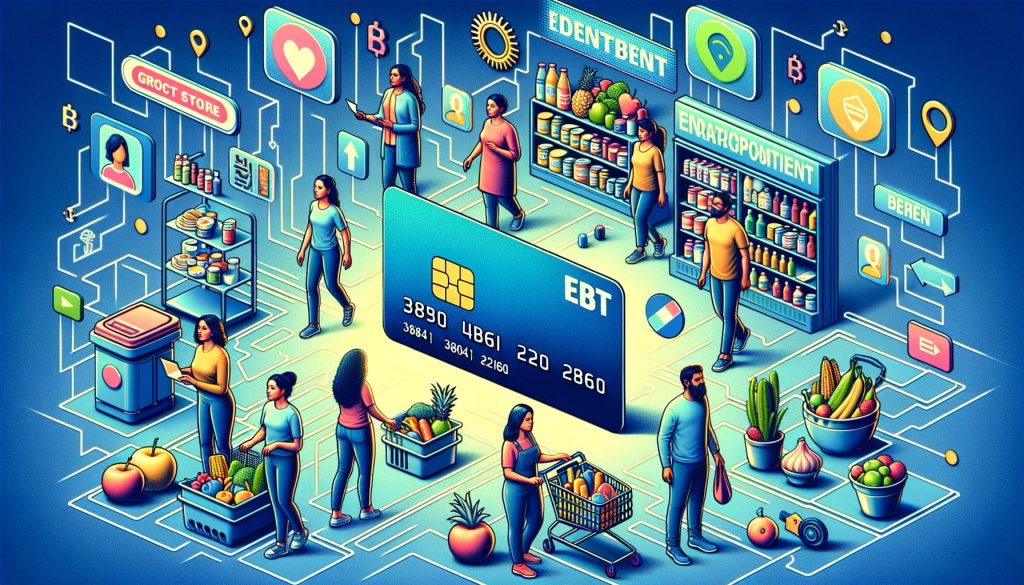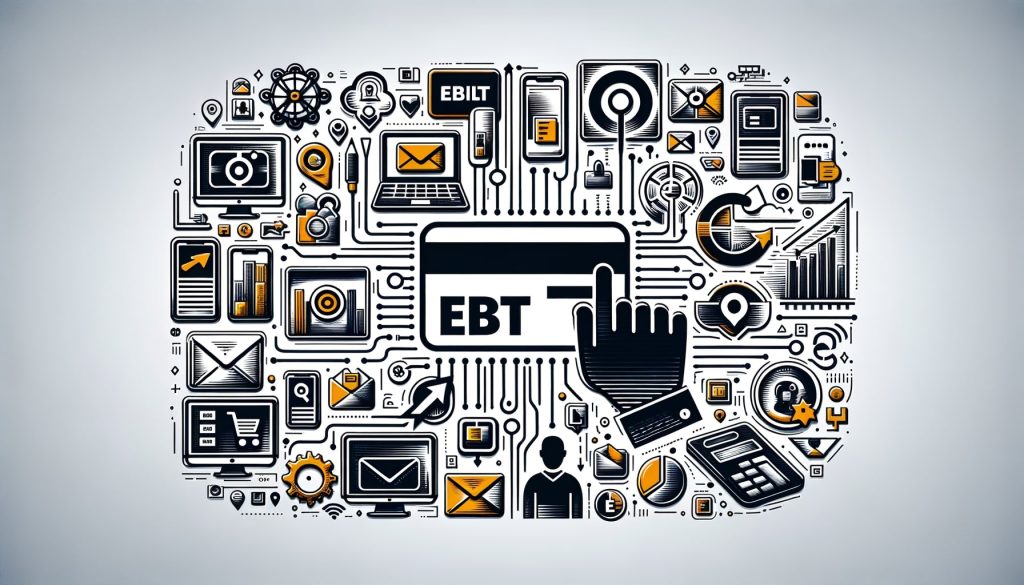
By manoj February 10, 2025
In today’s competitive retail landscape, it is crucial for store owners to find innovative ways to attract customers and increase revenue. One effective strategy is to advertise that your store accepts Electronic Benefit Transfer (EBT) payments. EBT is a government program that provides eligible low-income individuals and families with funds to purchase food and other essential items. By accepting EBT, you not only cater to a specific target audience but also tap into a potential revenue stream.
In this article, we will explore the benefits of accepting EBT, how to target EBT users, create an effective advertising strategy, utilize digital and traditional marketing channels, collaborate with local organizations, design EBT-friendly store signage, overcome stigma and misconceptions, and measure advertising success.
Benefits of Accepting EBT: How It Can Boost Your Store’s Revenue

Accepting EBT can have numerous benefits for your store’s revenue. Firstly, it expands your customer base by attracting low-income individuals and families who rely on EBT benefits to meet their basic needs. According to the United States Department of Agriculture (USDA), over 38 million people participated in the Supplemental Nutrition Assistance Program (SNAP) in 2020. By accepting EBT, you tap into this large market and increase foot traffic to your store.
Secondly, accepting EBT can lead to increased sales volume. EBT users often have limited financial resources and are more likely to spend their benefits on essential items like groceries. By offering EBT as a payment option, you make it easier for these customers to shop at your store, resulting in higher sales.
Furthermore, accepting EBT can enhance customer loyalty. EBT users often face stigma and discrimination when using their benefits. By openly advertising that your store accepts EBT, you create a welcoming and inclusive environment for these customers. This can foster loyalty and encourage repeat visits, as EBT users feel valued and respected.
Targeting the Right Audience: Identifying EBT Users in Your Area

To effectively advertise your store’s acceptance of EBT, it is crucial to identify and target EBT users in your area. Start by researching the demographics of your local community. Look for data on income levels, poverty rates, and the percentage of residents receiving government assistance. This information will give you insights into the potential size of the EBT user population in your area.
Additionally, consider partnering with local social service agencies, food banks, and community organizations that work with low-income individuals and families. These organizations often have data and resources that can help you identify and reach EBT users. Collaborating with them can also provide opportunities for joint advertising efforts and community outreach.
Creating an Effective Advertising Strategy: Tips and Techniques

Once you have identified your target audience, it’s time to create an effective advertising strategy to promote your store’s acceptance of EBT. Here are some tips and techniques to consider:
1. Clearly communicate your EBT acceptance: Make sure your advertising materials clearly state that your store accepts EBT. Use bold and eye-catching signage both inside and outside your store to attract attention.
2. Highlight the benefits: Emphasize the advantages of shopping at your store with EBT. Mention the wide range of products available, competitive prices, and any special discounts or promotions for EBT users.
3. Utilize storytelling: Share stories of EBT users who have had positive experiences shopping at your store. This humanizes the EBT program and helps overcome any stigma or misconceptions associated with it.
4. Use testimonials and reviews: Include testimonials from satisfied EBT customers in your advertising materials. Positive reviews can build trust and credibility among potential EBT users.
5. Leverage social media: Utilize social media platforms like Facebook, Instagram, and Twitter to reach EBT users in your area. Create engaging content, share EBT-related news and updates, and respond promptly to customer inquiries.
6. Offer educational resources: Provide educational resources on your website or in-store to help EBT users navigate the program. This can include information on eligible items, how to check EBT balances, and tips for budgeting and healthy eating.
Utilizing Digital Marketing Channels: Reaching EBT Users Online

In today’s digital age, it is essential to leverage online marketing channels to reach EBT users. Here are some effective strategies to consider:
1. Search engine optimization (SEO): Optimize your website and online content with relevant keywords to improve your visibility in search engine results. This will help EBT users find your store when searching for EBT-accepting retailers in their area.
2. Pay-per-click (PPC) advertising: Consider running PPC ads on search engines and social media platforms. Target keywords related to EBT and your local area to reach EBT users who are actively searching for stores that accept EBT.
3. Social media advertising: Use targeted advertising on platforms like Facebook and Instagram to reach EBT users in your area. Utilize demographic targeting options to ensure your ads are seen by the right audience.
4. Email marketing: Build an email list of EBT users who have shopped at your store or expressed interest in your EBT-related promotions. Send regular newsletters with updates, special offers, and educational content.
5. Influencer partnerships: Collaborate with local influencers or bloggers who have a following among EBT users. They can promote your store’s EBT acceptance to their audience, increasing awareness and driving traffic to your store.
Traditional Advertising Methods: Reaching EBT Users Offline
While digital marketing is essential, traditional advertising methods can still be effective in reaching EBT users offline. Here are some strategies to consider:
1. Print advertising: Place ads in local newspapers, community newsletters, and magazines that cater to low-income individuals and families. Highlight your store’s EBT acceptance and any special offers or discounts.
2. Direct mail: Send targeted direct mail campaigns to households in areas with a high concentration of EBT users. Include information about your store’s EBT acceptance, location, and any incentives for shopping with EBT.
3. Community events and sponsorships: Participate in local community events and sponsorships that cater to low-income individuals and families. This can include food drives, health fairs, and back-to-school events. Distribute promotional materials and engage with attendees to raise awareness about your store’s EBT acceptance.
4. Public transportation advertising: Consider placing ads on buses, trains, or bus stops in areas with a high concentration of EBT users. This can help reach a wide audience and generate awareness about your store’s EBT acceptance.
Collaborating with Local Organizations: Building Partnerships for EBT Advertising
Collaborating with local organizations can be a powerful way to reach EBT users and build partnerships for EBT advertising. Here’s how you can establish fruitful collaborations:
1. Partner with social service agencies: Reach out to local social service agencies that work with low-income individuals and families. Offer to host informational sessions or workshops on EBT benefits and how to shop at your store. This can help build trust and establish your store as a reliable resource for EBT users.
2. Collaborate with food banks: Food banks often have direct contact with EBT users and can provide valuable insights into their needs and preferences. Partner with food banks to distribute promotional materials, offer special discounts, or host joint events that benefit EBT users.
3. Engage with community organizations: Get involved with community organizations that focus on poverty alleviation, hunger relief, or financial literacy. Offer to sponsor events, provide donations, or volunteer your time. This demonstrates your commitment to the community and can generate positive word-of-mouth about your store’s EBT acceptance.
Designing EBT-Friendly Store Signage: Attracting EBT Users In-Store
Once you have successfully attracted EBT users to your store, it is essential to create a welcoming and inclusive environment. Designing EBT-friendly store signage can help attract and guide EBT users. Here are some tips:
1. Clear and visible signage: Place signs at the entrance and throughout your store that clearly state your acceptance of EBT. Use large fonts, bold colors, and symbols that are easily recognizable.
2. Signage in multiple languages: If your local community has a diverse population, consider including signage in multiple languages commonly spoken by EBT users. This ensures that all customers feel welcome and informed.
3. Signage for eligible items: Create signage in relevant sections of your store to indicate which items are eligible for purchase with EBT. This helps EBT users navigate the store and make informed choices.
4. Promote EBT-related discounts or promotions: Use signage to highlight any special discounts or promotions available to EBT users. This can incentivize EBT users to choose your store over competitors.
Overcoming Stigma and Misconceptions: Educating the Public about EBT Acceptance
One of the challenges of advertising EBT acceptance is overcoming stigma and misconceptions associated with the program. Here are some strategies to educate the public and address these issues:
1. Provide accurate information: Use your advertising materials, website, and social media platforms to provide accurate information about the EBT program. Address common misconceptions and clarify any misunderstandings.
2. Share success stories: Highlight success stories of EBT users who have used their benefits responsibly and achieved positive outcomes. This helps challenge stereotypes and humanizes the program.
3. Offer educational resources: Create educational resources that explain how the EBT program works, who is eligible, and what items can be purchased. Make these resources easily accessible in-store and online.
4. Engage with the community: Participate in community events, town hall meetings, or panel discussions where you can share your knowledge about the EBT program. This allows you to directly address concerns and answer questions from the public.
Measuring Advertising Success: Tracking and Analyzing EBT-Related Sales
To determine the effectiveness of your EBT advertising efforts, it is crucial to track and analyze EBT-related sales. Here are some metrics to consider:
1. EBT sales volume: Monitor the total sales volume generated through EBT transactions. Compare this to your overall sales to assess the impact of EBT acceptance on your store’s revenue.
2. Customer feedback: Collect feedback from EBT users through surveys or online reviews. Ask about their experience shopping at your store, their awareness of your EBT acceptance, and any suggestions for improvement.
3. Coupon redemptions: If you offer EBT-related discounts or promotions, track the number of coupons redeemed by EBT users. This can help gauge the effectiveness of your promotional efforts.
4. Website and social media analytics: Monitor website traffic, social media engagement, and conversion rates for EBT-related content. This data can provide insights into the reach and effectiveness of your online advertising efforts.
FAQs
Q1. What is EBT?
EBT stands for Electronic Benefit Transfer. It is a government program that provides eligible low-income individuals and families with funds to purchase food and other essential items.
Q2. How can accepting EBT boost my store’s revenue?
Accepting EBT expands your customer base by attracting low-income individuals and families who rely on EBT benefits. These customers often spend their benefits on essential items, leading to increased sales volume and potentially higher revenue for your store.
Q3. How can I identify EBT users in my area?
Research the demographics of your local community, including income levels, poverty rates, and the percentage of residents receiving government assistance. Partnering with local social service agencies, food banks, and community organizations can also provide valuable insights and data on EBT users in your area.
Q4. What are some effective digital marketing channels to reach EBT users?
Utilize search engine optimization (SEO) to improve your website’s visibility in search engine results. Consider running pay-per-click (PPC) ads on search engines and social media platforms. Leverage social media platforms like Facebook and Instagram to engage with EBT users in your area. Build an email list and send regular newsletters to EBT users who have shopped at your store or expressed interest in your EBT-related promotions.
Q5. How can I overcome stigma and misconceptions associated with EBT acceptance?
Provide accurate information about the EBT program through your advertising materials, website, and social media platforms. Share success stories of responsible EBT users to challenge stereotypes. Offer educational resources that explain how the EBT program works and what items can be purchased. Engage with the community through events and discussions to address concerns and answer questions.
Conclusion
Advertising your store’s acceptance of EBT can be a powerful strategy to attract customers, increase revenue, and foster loyalty.
By understanding the benefits of accepting EBT, targeting the right audience, creating an effective advertising strategy, utilizing digital and traditional marketing channels, collaborating with local organizations, designing EBT-friendly store signage, overcoming stigma and misconceptions, and measuring advertising success, you can effectively promote your store’s EBT acceptance and tap into a valuable market.
Remember to continuously evaluate and refine your advertising efforts to ensure maximum impact and success.